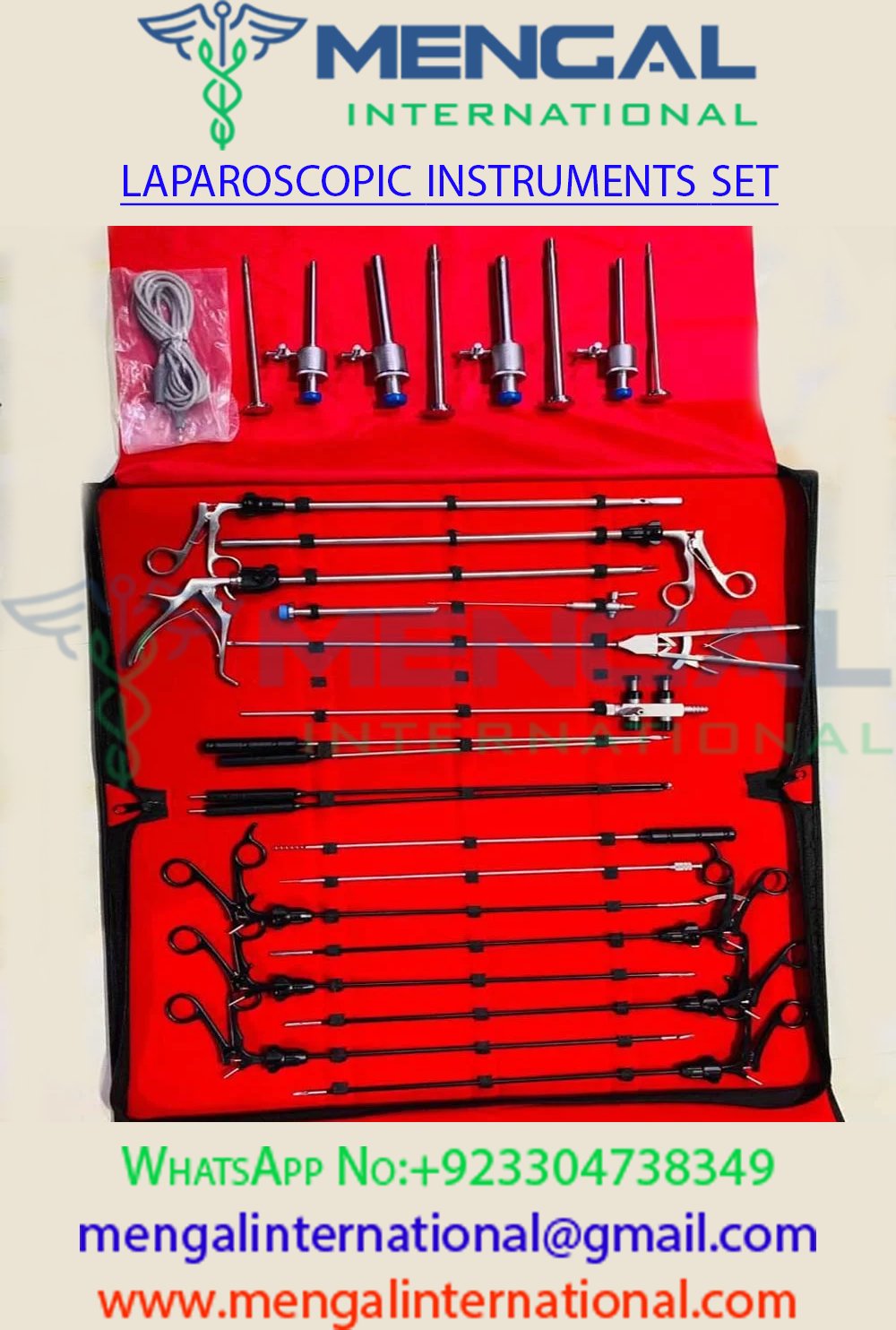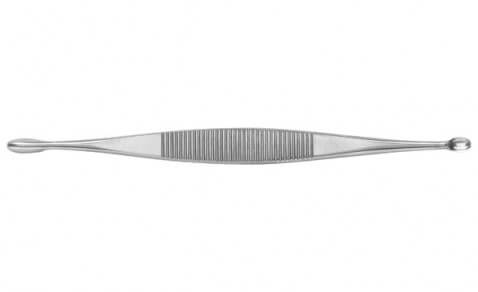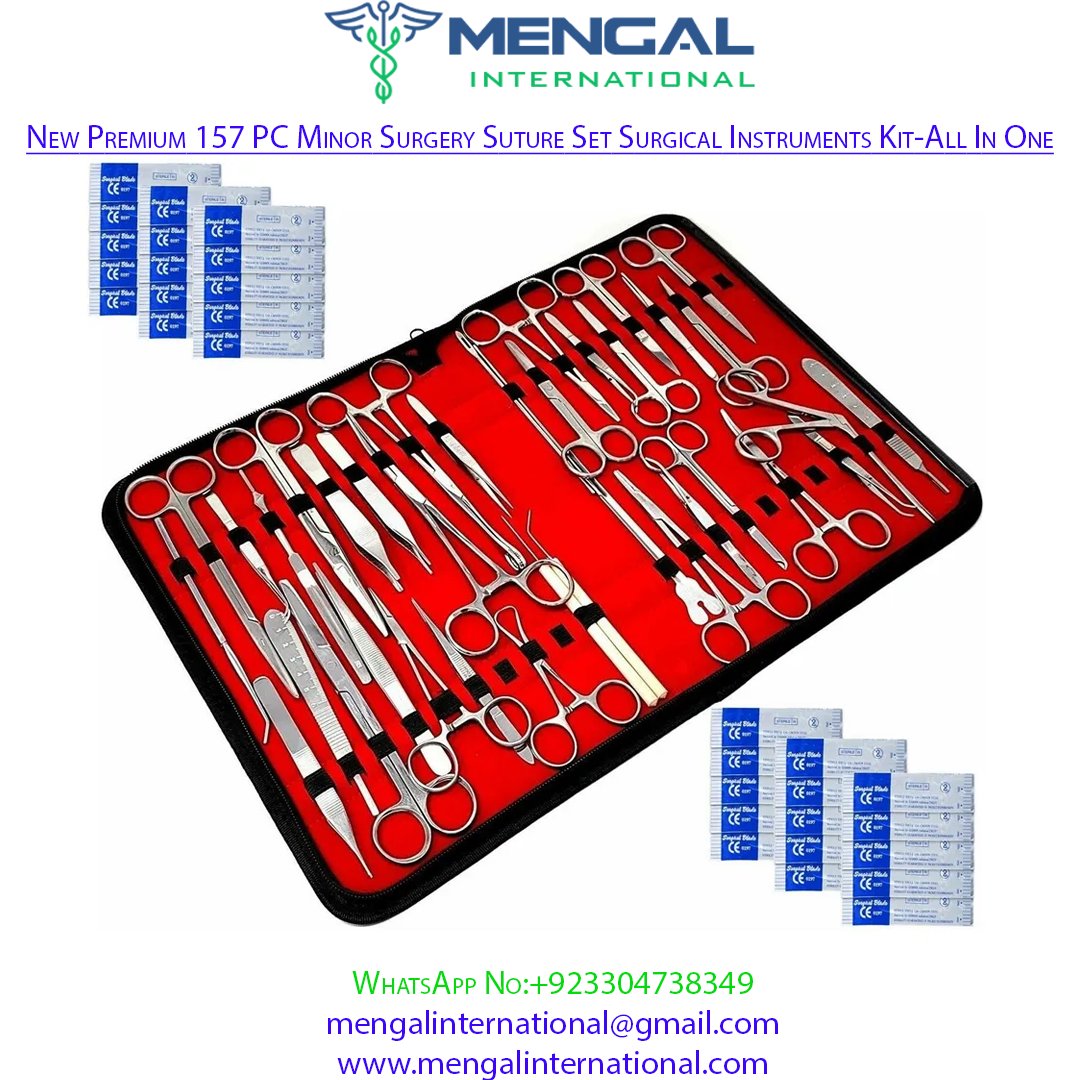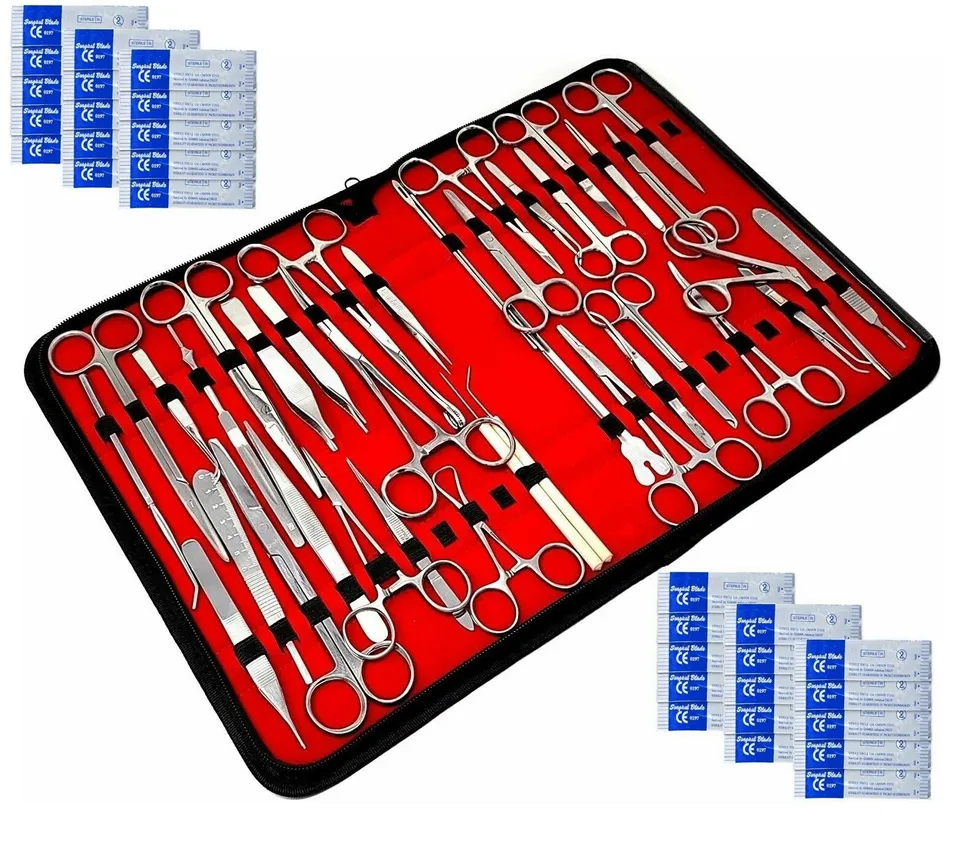laparoscopic instruments set
Laparoscopic Instruments Basic Set comprises of
Maryland
Scissor
Graspers 3
Aspiration needle
Mayomacmi screw
L hock
Spatula
Knot pusher
Suction irrigation
Needle holder
Vera’s needle
Sleeve reducer
Clip applicator
Claw
Spoon
Trocar set
Cable
Made With High Quality Stainless Steel
Imported Powder Coated All the Instruments
Description
A laparoscopic instruments set is a specialized collection of surgical tools used in minimally invasive surgery (laparoscopy). Laparoscopic surgery involves making small incisions (usually 0.5 to 1.5 cm) through which a camera (laparoscope) and instruments are inserted. This technique allows surgeons to perform procedures inside the abdomen or pelvis without the need for large incisions, reducing recovery time, post-operative pain, and risk of complications. Here’s a detailed overview of the components typically included in a laparoscopic instruments set:
Components of a Laparoscopic Instruments Set:
- Trocar and Cannula System:
- Trocar: Sharp, pointed instrument used to create initial entry into the abdominal cavity through the skin and abdominal wall. Trocars vary in size and configuration depending on the type of instruments to be inserted.
- Cannula: Hollow tube inserted through the trocar, providing a conduit for the insertion of laparoscopic instruments (like graspers, scissors, and cameras) into the abdominal cavity while maintaining a sealed environment.
- Laparoscope:
- Laparoscope: A thin, long tube with a camera and light source at its tip. It is inserted through a trocar and allows the surgeon to visualize the internal organs and structures on a monitor in real-time during the surgery.
- Graspers:
- Dissecting Graspers: Instruments with grasping jaws used for manipulating and dissecting tissues inside the abdomen. They come in various designs, including straight, curved, and fenestrated (with small openings for better grip).
- Bipolar Graspers: Graspers with built-in electrosurgical capability for precise tissue dissection and hemostasis (control of bleeding) during surgery.
- Scissors and Dissectors:
- Metzenbaum Scissors: Delicate, curved scissors used for cutting and dissecting tissues with precision.
- Hook Dissectors: Instruments with a hook-shaped tip used for blunt dissection and manipulation of tissues, particularly useful in separating tissues adherent due to inflammation or scarring.
- Clip Appliers:
- Hem-o-lok Clip Appliers: Instruments used to apply clips for securing blood vessels or tissue structures during surgery, facilitating safe and efficient hemostasis.
- Needle Holders and Suturing Instruments:
- Laparoscopic Needle Holders: Instruments designed to hold and manipulate needles during suturing inside the abdomen. They feature long, slender shafts and articulated tips for precise control.
- Suturing Instruments: Various instruments like knot pushers, suture passers, and knot tiers used for laparoscopic suturing and closure of incisions or tissue layers.
- Retractors and Probes:
- Laparoscopic Retractors: Instruments used to retract organs or tissues to provide optimal exposure during surgery without the need for large incisions.
- Probe and Elevator: Instruments for gentle tissue manipulation, probing structures, or elevating tissues for better visualization and access.
- Electrocautery and Energy Devices:
- Bipolar and Monopolar Electrocautery: Instruments for precise tissue dissection, coagulation, and hemostasis using electrical current.
- Ultrasonic Dissector (Harmonic Scalpel): Energy devices that use ultrasonic vibrations to cut and coagulate tissues simultaneously, reducing thermal damage to surrounding tissues.
- Insufflation and Irrigation Devices:
- Insufflation Devices: Instruments for inflating the abdominal cavity with carbon dioxide gas to create a working space for surgery.
- Irrigation/Suction Devices: Instruments used for irrigating and suctioning fluids from the surgical site to maintain clear visualization.
Importance and Use of Laparoscopic Instruments:
A laparoscopic instruments set is crucial for the success of laparoscopic surgeries, offering several advantages:
- Minimally Invasive Approach: Enables surgeons to perform complex procedures through small incisions, reducing trauma to surrounding tissues and organs.
- Enhanced Visualization: Laparoscopes provide high-definition images of the surgical field, allowing for precise and accurate manipulation of tissues.
- Faster Recovery and Reduced Complications: Patients typically experience less pain, shorter hospital stays, and quicker recovery times compared to traditional open surgery.
- Versatility and Precision: The variety of instruments in the set allows for a wide range of surgical procedures, from simple diagnostic procedures to complex interventions like organ resections and reconstructions.
Conclusion:
The laparoscopic instruments set represents a sophisticated toolkit essential for modern surgical practice, enabling surgeons to perform intricate procedures with minimal invasiveness and maximal precision. Regular maintenance, proper sterilization, and familiarity with instrument handling and techniques are crucial for ensuring safety, efficiency, and positive patient outcomes in laparoscopic surgery.







Reviews
There are no reviews yet.